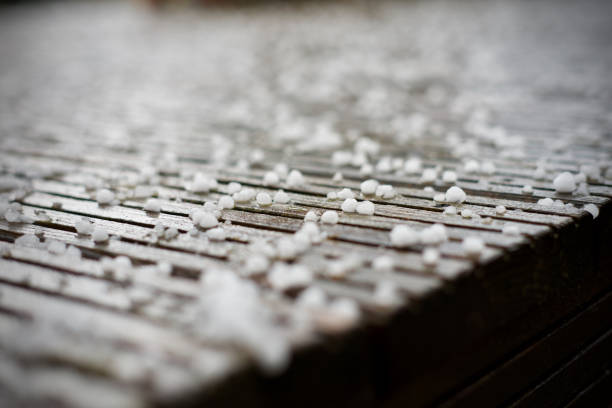Thunderstorms can sustain larger hail stones.

Small hailstones lying on a wooden terrace. (Photo: iStock)
Hail stones are created when raindrops from a thunderstorm are carried to the frigid top of a thunderhead by the storm’s updraft. The raindrops will then freeze and will form now as hail stones.
This can be replicated with a hair dryer and a ping pong ball. The ping pong ball gets caught in the updraft and then falls. The process will continue until either gravity overcomes or the updraft becomes unable to keep the hail stones or ping pong ball from falling to the ground.
Some thunderstorms though, are stronger than others. Stronger thunderstorms can create and sustain even larger hail stones. This can be replicated when you use a leaf blower and a larger ball, but the strongest super-cells have an angled updraft because of wind shears. Where winds are moving at differing speeds or direction in the atmosphere.
READ ALSO: US Technology Restrictions: A Hurdle To A Better Relationship With China?
The storm updrift will tilt, separating the updraft from the downdraft.
The largest hail stone that was captured in the United States fell near Vivan, South Dakota in 2010. The hail stone was eight inches wide and weighed almost two pounds.
READ ALSO: Are Wormholes Real? Unraveling The Mystery Of Cosmic Shortcuts In Space-Time









